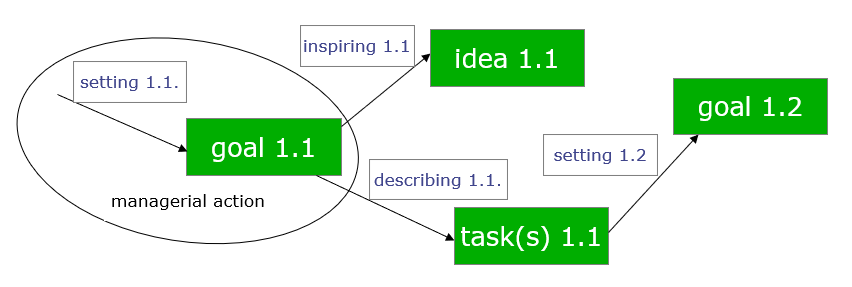In the previous post, I described how a measurement tool that records managerial activities works. Let me remind you – it measures successive states of resources (primary organizational terms) over time, which change due to processes (derivative organizational terms) initiated by the manager and his team. But the question arises: where to mount these measuring tools to capture what the manager is really doing?
Laboratory conditions could only be used to a limited extent – the measurement error in relation to real situations would be quite large, and the so-called bias (or noise) of the measurement would be even larger – mainly due to the fact that the situation would be arranged artificially. Where, then, to place the measurement tools of managerial activities so that they record as many real managerial actions as possible?
To answer this question, let’s use an analogy. Consider a simple physical construction activity: nailing nails. How can you record whether a worker hits a nail with a hammer (activity: nailing a nail). Add questions: with what force, how often, whether he hits evenly or at an angle, etc. It would be very cumbersome to set up a camera or attach an external newtonometer (force measurement) or stopwatch (frequency of strikes) to the hammer. So where should these measurement tools be placed? They should be built into the hammer!
Let’s do the same with a measurement tool for managerial actions. Where should such a measurement tool be built in? They should be built into the managerial tool that enables the manager to perform the activity! For example, in tools such as a planner (action: setting a plan), a decision-making tool (action: decision-making), or an employee motivation survey tool (action: motivation survey). If you thought that there aren’t many such tools or where to find them – you’re right. There aren’t! However, you can find them on my platform with tools: TransistorsHead.com (http://transistorshead.com/).
The solution to the problem of recording managerial actions is to record these actions where they arise – using managerial tools! Let me give you a further definition of a managerial tool – it is an instrument based on the concept of a unit of behavior and is used to solve an organizing problem by a manager or organizational participants. A tool is something different from a management technique or method. A technique is a way of doing something, a method is more general, sometimes including different techniques. A technique or method exists only when the manager uses it, while a tool exists completely independently of the manager – just as a hammer exists independently of the person who uses it to nail.
In the context of the aforementioned combination of resource and process approaches, the following features of the managerial tool are adopted: in the managerial tool, information on resources resulting from processes is recorded, and it is possible to infer processes on the basis of recorded information on resources. An example situation is shown in Figure 1.

Figure 1. Recording of managerial actions
To begin with, it is necessary to determine the symbols next to the verbs and nouns in Figure 1. The first number indicates the number of the object (e.g., goal one – goal 1), and the second number its version (e.g., goal 1.1 is goal one in version one, and goal 1.2 is goal one in version two).
As can be seen from Figure 1, when a team manager sets a goal (the managerial action represented by set 1.1 and goal 1.1), the measurement tool records the features of goal 1.1. If later (e.g., after task-describe 1.1 and task 1.1) this team manager again wants to set goal 1. 1 (change the existing features of goal 1.1), then he launches another managerial action – establish 1.2. Then the features of goal 1.1 are changed and a version of the goal named goal 1.2 appears (formed from the managerial activity: cease 1.2 and goal 1.2). The difference between the characteristics of the resource, i.e. the version of goal 1.2 and goal 1.1, gives us the opportunity to infer the processes that occurred in order for this goal change to take place.
In this way, individual managerial actions can be recorded on the timeline along with their characteristics. The most important thing is that in this way resources and not processes are recorded at relevant moments in time. I adopted this solution because it is much easier to record the state of a resource at a given moment (or consecutive seconds) than the course of a process. I will describe how to use this to build an artificial manager in future blog posts.

